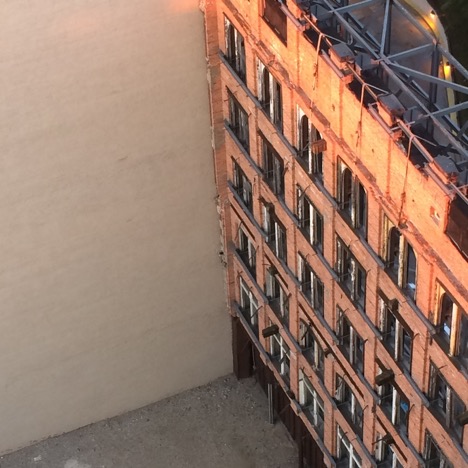Facadectomy 101
First things first: What is a façade? What is a facadectomy? Facadism?
A façade refers to any of the exterior faces of a building but is principally used to describe the principal face of the building and more generally references a side of the building facing a street or public space. Architectural detail and ornamentation are traditionally concentrated on a building’s façade.
Façadism or facadectomy is the act of retaining the façade of a building while constructing a new internal structure behind or within the original front facing elevation’s shell. This intervention can result from a compromise reached by the developer and the local historic commission or preservation community. Occasionally, new development does not take place and the original building is demolished while the façade remains supported by scaffold.
Why would you demolish a building but keep the front? Is facadism an example of preservation?
Occasionally, portions of a building are too compromised to feasibly undergo rehabilitation or an existing building cannot structurally support the construction of additional floors above. When a larger structure is constructed, the preservation and incorporation of the façade into the new building is an example of preservation.
Do other cities have this issue?
Many urban centers have dealt and currently deal with issues relating to façade preservation, and the approaches differ. In large cities where air rights (the ability to develop in the space above a property by an owner) are often a prized and expensive ticket to high-rise development projects, such as New York City, squat facades are often left in the dust to make way for modern towers that reach for the clouds unless they are preserved with a facadectomy. Toronto, Washington DC and Montreal are other cities that have implemented facadism with mixed reviews and results.
Vines and small trees grow wildly behind a preserved façade in Old Montréal (Vieux-Montréal). (Image copyright Dawn Bilobran)
What is the story with the façade at 44 West Adams in Grand Circus Park?
The façade of the Fine Arts Building has stood supported by scaffold since 2009, awaiting development by owner Olympia Entertainment Inc. Constructed in 1905 and designed by Louis Kamper, the Fine Arts Building contained offices and also later the Adams Theater, designed by famed theater architect C. Howard Crane in 1917. The theater screened multiple genres of film and was in operation until 1988.
The Fine Arts Building façade, as viewed from inside the Kales Building. (Image copyright Dawn Bilobran)
Is relocating a building considered historic preservation?
Yes and no. If the only possible course of action to preserve a building from demolition is to move it, then certainly this is an example of a historic preservation intervention. However, the National Park Service reminds that “such an action should be undertaken only as a last resort when all other preservation options have been exhausted.”
The preservation world is often divided on this issue. While many preservationists support the relocation of a historic building as a last-ditch preservation intervention to save a structure from demolition and an example of the flexibility needed to accommodate growth, others criticize that the removal of a building or its facade from its original site greatly compromises the historic integrity of the property. Others prefer to evaluate building relocations on a case by case basis. In situations where buildings simply cannot be retained in place, well-developed interpretation materials and markers can be beneficial in reminding the visitor that the structure is not in its original setting. Greenfield Village at The Henry Ford is a good example of historic structures that are not in their original location yet provide context for their original uses and settings.
Is moving buildings a new thing?
No! The practice of relocating built environments has been going on for centuries!
What happens to a structure’s historic designation when a building is moved from its original location? What about when it is taken apart?
If a building is listed on the National Register of Historic Places (a federal designation) and in the “event that a structure is moved, deletion from the National Register will be automatic” unless National Park Service procedures are followed prior to relocation, including but not limited to: approval of the new site by State Historic Preservation Office and National Park Service professionals, measures to ensure that the interpretation of the original and new site are appropriate, and the submission of updated documentation.
Buildings that are locally designated as a historic district or are within conservation overlay districts must obtain approvals before relocation, and this action may impact the designation.
If a building is not locally designated then there is little that can be done to preserve in place a structure threatened with relocation.
What do you think? Is facadism a middle ground between reuse and demolition or is it a poor excuse for a preservation?
This post was originally written by Dawn Bilobran for Preservation Detroit.
Sources / Further Reading
- https://savingplaces.org/stories/preservation-glossary-todays-word-facade#.WcpqF7KGPIU
- http://www.nytimes.com/1985/07/15/nyregion/facadism-on-the-rise-preservation-or-illusion.html?pagewanted=all&mcubz=0
- https://www.nps.gov/tps/how-to-preserve/preservedocs/Moving-Historic-Buildings.pdf
- https://nowtoronto.com/news/facadism-is-it-an-architectural-plague-or-preservation/
- http://cinematreasures.org/theaters/2261


